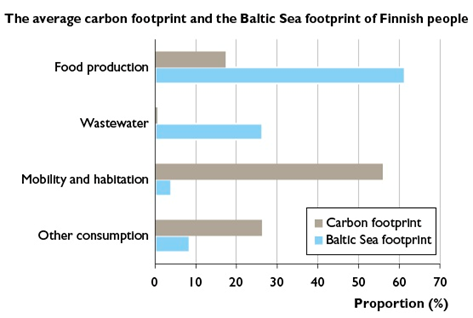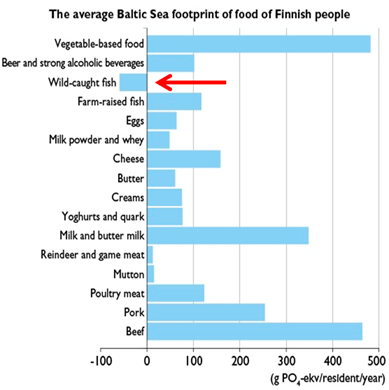By Anna Saarentaus, John Nurminen Foundation
Baltic Sea calculator is an internet-based tool that helps identifying the most important sources of nutrient pollution arising from consumption, and the easiest ways to reduce it. With the help of this tool, a consumer can calculate his or her personal nutrient footprint i.e. estimate how much nutrient pollution is caused by his or her everyday life.
Baltic Sea calculator has been developed by Finnish Environment Institute and Natural Resources Institute Finland on the initiative of Helsingin Sanomat and John Nurminen Foundation (JNF). Ministries of Agriculture and the Environment and JNF financed the development work. The calculator is available in Finnish e.g. at https://dynamic.hs.fi/2017/itameri/ and in English at http://www.syke.fi/balticseacalculator.
The calculator allows analysing a personalised Baltic Sea footprint by selecting your home town, way of living, diet and hobbies. By doing so, the calculator covers the most important sources of pollution from consumption and establishes a link between consumption choices and the state of the Baltic Sea.
The result is the nutrient load of the consumer in grams of phosphorus per year. To illustrate the result, the consumer is also told how many buckets of algae can be fed with these nutrients.
Diet and wastewater main sources of nutrient footprint
For the Baltic Sea footprint of an average consumer, the most important choice is our diet. Food production accounts for about 60 per cent of the Baltic Sea footprint of an average Finnish consumer. Wastewater also plays an important role covering about 25 per cent of the footprint. It has to be noted, however, that it matters where the consumer lives as there are substantial differences in the wastewater treatment results between municipalities.
Compared to eating habits and place of residence, other choices are less visible in the Baltic Sea footprint – the role of transport, electricity and heating is less than 15 %. This very different from our carbon footprint (greyish bars) which comes from energy consumption mainly.
The easiest way to reduce the Baltic Sea footprint is to eat more wild fish and vegetables
Most of the nutrient load from food production (76%) comes from products of animal origin. By contrast, the share of vegetable products (20%) and alcoholic beverages (4%) is lower. On average, 134 buckets of algae are produced per consumer per year. Wild fish is the only food with a negative nutrient footprint, so by eating sustainably caught Baltic Sea fish one can actually remove nutrients from the sea ecosystem.
There is some potential to reduce one’s nutrient footprint by favouring vegetables and domestic wild fish instead of meat and dairy products. In addition, there is link between Baltic Sea calculator and Nutribute: with the former, consumers can evaluate their personal nutrient footprint and chances of decreasing it, and with the latter, it is possible to compensate for the remaining nutrient discharges by supporting a nutrient reduction project!


